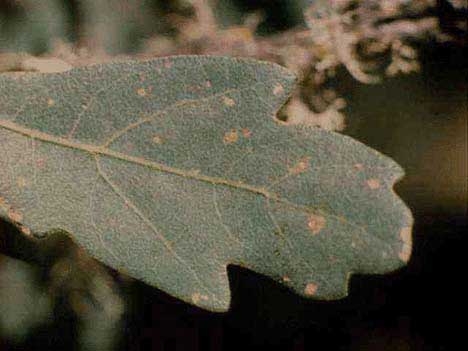By Brent McGhie, Butte County Master Gardener, July 17, 2015

On good sites with deeper soils and available moisture, blue oaks can't compete with other trees, such as live oaks. They are, however, superbly adapted to the shallow, rocky soils of the hot, dry foothills, where other oaks would struggle to survive. These trees can tolerate temperatures above 100° for several weeks at a time. In addition to an extensive system of lateral feeder roots, which are fairly shallow, blue oaks develop deep sinker roots, which can grow through cracks in rocks to as deep as 80 feet in pursuit of groundwater.

Normally blue oaks are winter-deciduous, dropping their leaves in the fall. However, when water becomes too scarce, even for blue oaks, they become drought-deciduous and simply drop their leaves and remain dormant until the following spring. Drought dormancy is common among desert and chaparral plants, but is a rare feature for oaks and for trees in general.
For homeowners who are lucky enough to have blue oaks growing on their land, this means “fall” may come as early as July or August in dry years. In fact, it has been noted that this year the leaves of some blue oaks in the Butte County foothills are already beginning to turn brown. These trees may look like they are dying or dead, but don't be fooled into cutting them down. They will normally produce a fall crop of acorns from stored food and then follow up with new leaves in the spring.
A tree owner may be tempted to water drought-stressed oaks, but should avoid doing so. Summer irrigation will encourage “oak root rot” and other soil pathogens and could very likely do far more harm than good. Our blue oaks have survived many droughts before this one. Keep in mind that the key to living with oaks is to disturb them as little as possible.